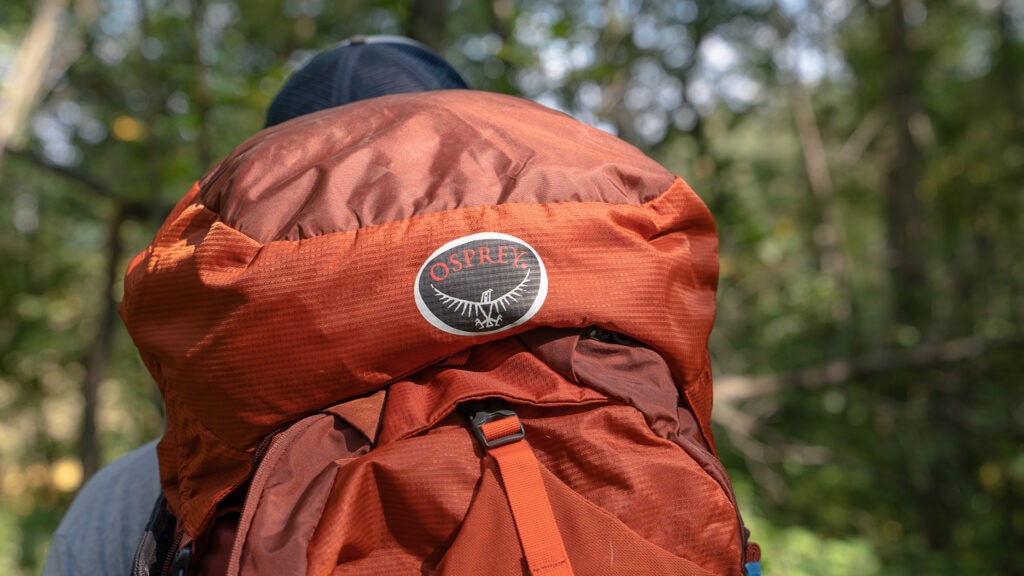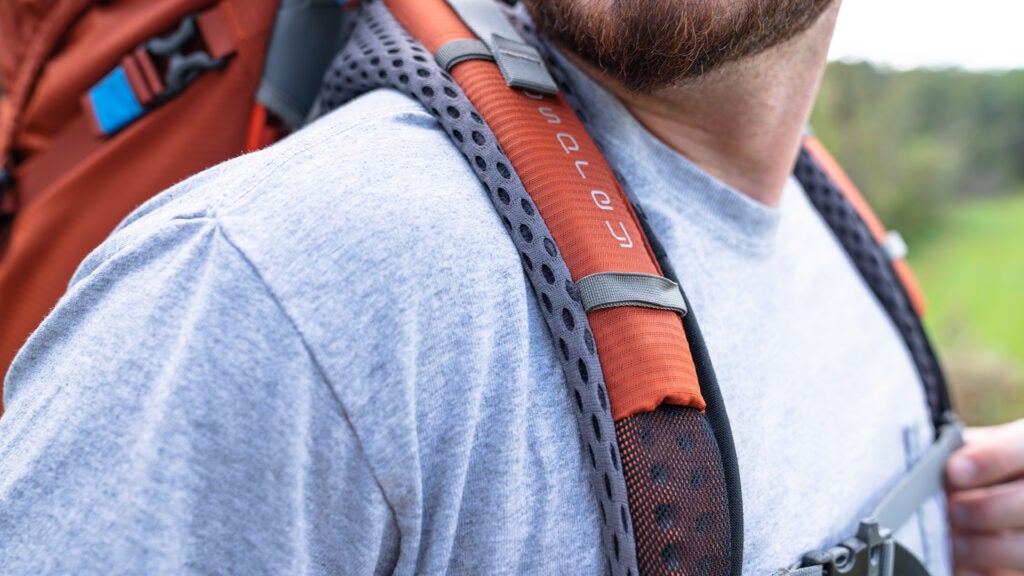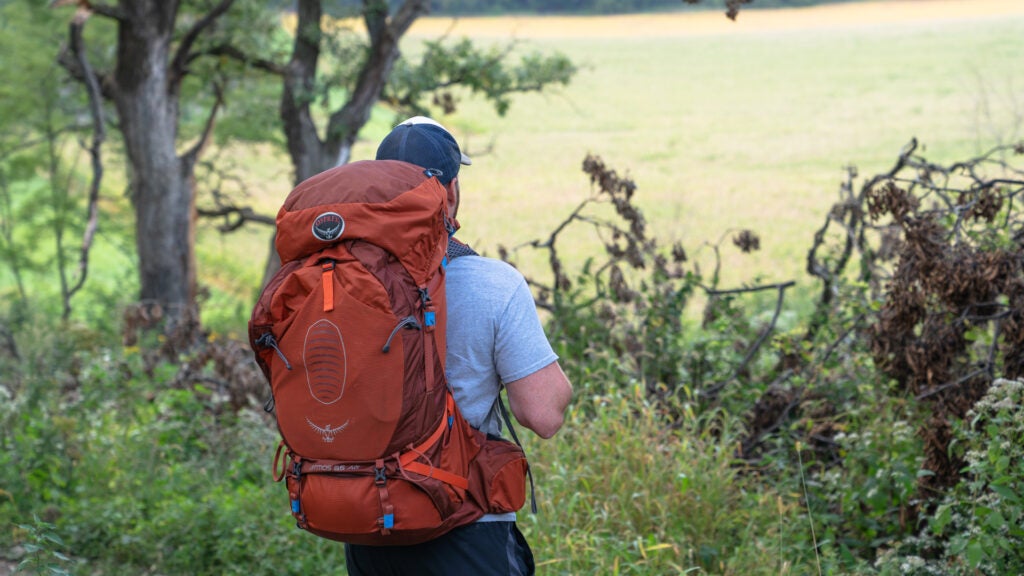Back in the day, I remember hearing Marines wax poetic about the good old days when the ALICE pack was standard issue. They talked about it like some kind of gravity-defying spell that turned SAW drums and bivy sacks into mere feathers. You’d think it was a personal masseuse that followed them around giving back rubs all day. I wouldn’t know anything about it. By the time I hit the fleet, the Marine Corps had switched to the ILBE. It had a more modern look, and a modular approach to humping gear from point A to point B. And it sucked at everything. I guess that’s why it was so short-lived.
The ILBE may have looked modern, but it was heavy, used MOLLE to attach any gear that wouldn’t fit inside, and had a mounting point for an assault pack in the worst possible place for weight distribution: hanging right off the back (once again, please note that your spinal deterioration is not service-related). I hated that damn thing. The problem was that, to the 10-pound brains at the Pentagon, it looked right. The ILBE was shaped like the best civilian packs of the day, so why didn’t it work like one?
My own pack of seven years or so is everything the ILBE was supposed to be. The Osprey Atmos AG 65 backpack (AG stands for anti-gravity) is strong, lightweight, and fits better than my favorite t-shirt. It has room for everything a week in the field requires, and just enough room for customization to make it my own. It’s well-built without being overbuilt, and comfortable without being fragile. At around $265, it also isn’t cheap. That price puts it on par with other high-end camping packs from premium brands like Arc’teryx, Deuter, and Gregory. So, can it justify the premium price? The years I’ve voluntarily carried this pack should give you an idea, but let’s dive into exactly why I’ve kept this pack around––and why it still fuels my hatred for the ILBE.
Unboxing
When I first got my hands on the Atmos 65 AG (the name was slightly different at the time), it felt instantly familiar. It also felt like holding the real thing for the first time after using a cheap knock-off for years. Its shoulder straps and hip belt are well-padded, the top pouch is removable, and there’s an external pouch for things like warming layers or a raincoat. The rain cover is built-in, so it’s one less thing for me to misplace.
Materials are another thing that separates excellent packs from mediocre ones. Instead of heavy canvas and thick foam, Osprey uses lightweight fabric and padding that manage to be durable without being heavy. For something like this to be both light and strong, you know there’s a tradeoff and it comes at the price tag. The Atmos cost me nearly $300 when I bought it. By the time I finished fitting it properly, though, I didn’t mind the price one bit.

Less expensive packs provide similar durability by using tough materials and robust components everywhere. That approach works and saves money on testing, but it results in a heavy product. Atmos packs balance weight, durability, and cost by using nylon as thick as 620-denier in high-wear areas, and as thin as 100-denier in others. Some pieces are thin mesh. By rigorously testing its products, Osprey knows exactly where strength is required, and where lightness can be achieved.
An internal reservoir accommodates a three-liter water system, and both shoulder straps feature a pair of elastic retaining straps for the drinking tube. There’s an assortment of pockets to keep things like water bottles and maps readily accessible, and zippered compartments to keep valuables like car keys secure. One of my favorite features is the mesh back panel that creates air flow between me and my pack. That doesn’t just keep me cool, it prevents sweat from building up and irritating my skin on long hikes.
Osprey offers three sizes: large, medium, and small. That refers to the size of torso each bag is meant to accommodate, rather than its capacity. By adjusting the placement of the hip belt, I can tailor fitment to my spine. With that taken care of, all I have to do is tighten the usual straps for a great fit every time. All sizes are meant for loads up to 50 pounds, and even the large pack weighs only 4.64 pounds. That’s roughly half of what an ILBE weighs, for comparison.

How we tested the Osprey Atmos AG 65 backpack
In the seven years I’ve owned this pack, I’ve preferred dispersed camping to established campsites. The idea of leaving the comfort of my own house to listen to someone else’s conversations and sleep within 10 feet of a paved road just doesn’t sound like fun to me. I’ve turned to the Atmos for several remote camping trips, and it’s impressed me every time.
My longest trip was a stay in Desolation Wilderness. The hike in was about 10 miles, with the first half looking more like stairs than a trail. After the great Stairmaster adventure, the trail was mostly above the treeline and put me in direct, high-altitude sunlight for the remainder of the hike. That kind of heat isn’t what I’m built for, but the Atmos did a great job of keeping my back ventilated and cool.

I err on the side of lightness when it comes to packing, but I still carry enough gear to create a burden if carried improperly. Things like a three-person tent, cold-weather sleeping bag, Jetboil camp stove, and E-tool add up. Factor in enough warming layers and rain gear for the unpredictable Sierra Nevadas, and packs can get heavy before you know it. The anti-gravity moniker might sound like a stretch, but I was thrilled with how light the marital half (equivalent to about 80 percent) of my wife’s and my camping load felt.
What we like about the Osprey Atmos AG 65 backpack
I know we’re not supposed to make comfort-based decisions, but there’s no need to make carrying all your gear more painful than it needs to be. There is something noble and good about having sore legs at the end of the day––you don’t get extra points for being tortured by shitty gear.
Comfort is one area where the Atmos excels. A full camping load with enough clothes, food, and equipment for a week in the field feels unbelievably light in this pack. Part of that is because the pack itself doesn’t weigh very much, and part is because of how well it places the load on my body. Pull it high and snug, and you’ll feel like pounds are falling off. Even my tattered spine and knees feel relatively fresh carrying the Atmos, and that’s about as good as I can hope for.

This is due to the pack’s design. Osprey obviously puts extensive research and development into its products, and they improve every year. Pockets and dividers are well-placed. The padding is excellent. The back and hip belt are rigid enough to support the recommended 50-pound capacity without impeding my movement. High-quality materials make all the difference, and I can’t say enough about how well the lightweight nylon performs in all kinds of temperatures and weather.
What we don’t like about the Osprey Atmos AG 65 backpack
The only problem I’ve had with my Atmos is a broken zipper. I crammed just a little too much into one of the external pockets, and the zipper popped apart when I tried to force it shut. Osprey has changed the design since then, so maybe I wasn’t the only one. It’s also nice to know the company backs its products with such an epic lifetime warranty.
I’ll take the blame for that, but I also recognize that the zipper isn’t exactly heavy-duty. Getting a pack of this size under five pounds isn’t easy, and some of the components won’t be as tough as you might expect if you’re used to military equipment. It’ll still get the job done; you just can’t be a meathead with it.
Verdict
They say that less is more, and the Osprey Atmos AG 65 definitely supports that theory. Years of continuous improvement have resulted in a pack that has all the features you need, with none of the crap you don’t. It’s strong enough to handle a reasonable amount of wear and tear, and light enough to make you hungry for another mile.
I’ll be honest, I usually go camping because my wife enjoys it. Right after I got out of the Marine Corps, hiking and camping sounded too much like a field exercise for my comfort. I quickly learned how different the two experiences are. I’ve come to enjoy carrying gear miles into the wilderness––in no small part due to having the right equipment.
Saved rounds
I actually worked with a Marine who was related to someone involved in the ILBE’s design process. He argued that the pack was a good product, it was just being used improperly. At his request, a few of us tried it wearing just our cammies and, sure enough, it fit fine. It was still heavy and a bit crude in terms of materials, but the pressure points and back strain were gone. Apparently, no one bothered to tell the designers that the ILBE would be worn over body armor. All its ergonomic features and load-bearing attributes went out the window the second a plate carrier was added to the equation.
Today, the ILBE is another piece of retired military equipment being snatched up for discount prices at surplus stores. Preppers, hikers, and hunters are putting it to use and seem to love it. After all, it is “mil-spec.” They wish they had access to military equipment, and those on the inside are buying civilian gear to fix what standard-issue got wrong. Funny how that works.
[embedded content]
FAQs about the Osprey Atmos AG 65 backpack
More questions? Here’s Task & Purpose’s additional brief.
Q. How much does the Osprey Atmos 65 AG backpack cost?
A. This Osprey Atmos 65 AG costs about $265, but if you can fit a size small, you might be able to score one for as little as $205.
Q. How do I use all this sizing information?
A. The pack itself has a capacity rating of 65 liters. That’s fairly large in the camping world and generally used for trips lasting three to five days. Beyond that, you’re generally looking at expedition packs. The frame is available in small, medium, and large sizes. That’s used to fit the pack to your torso size, and getting this right is critical to preventing discomfort and injury. Take the time to get fitted at your local outfitter or use Osprey’s fitment guide.
Q. Are Osprey packs durable?
A. Reducing weight often comes at the cost of durability, but high-end materials keep Osprey packs strong. If you do manage to damage your pack, Osprey backs their products up with its aptly named All Mighty Guarantee.
Q. How do Osprey packs compare to other outdoor adventure brands?
A. Osprey is one of the best brands in the business. Other top-tier manufacturers include Deuter, Gregory, and Arc’teryx.
Q. Will my significant other trick me into carrying all our gear in this pack?
A. Yes. Good thing it’s comfortable.
Got questions? Comment below & talk with T&P’s editors
We’re here to be expert operators in everything How-To related. Use us, compliment us, tell us we’ve gone full FUBAR. Comment below and let’s talk! You can also shout at us on Twitter or Instagram.
Our gear section
Scott Murdock is a Marine Corps veteran and contributor to Task & Purpose. He’s selflessly committed himself to experiencing the best gear, gadgets, stories, and alcoholic beverages in the service of you, the reader.
Task & Purpose and its partners may earn a commission if you purchase a product through one of our links. We independently evaluate gear by putting products in the hands of subject matter experts. The products we test may be purchased by Task & Purpose, our staff, or provided for review by a manufacturer. No matter the source, our testing procedures and our assessments remain free from third-party influence. Learn more about our product review process.
